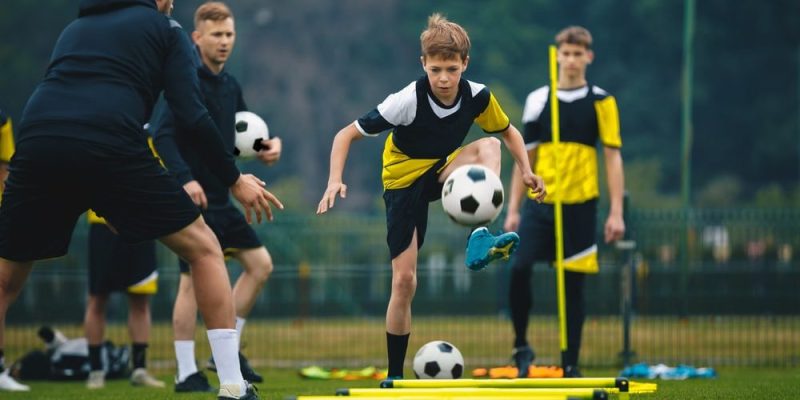We explain what pre-sports games are, their classification and characteristics. Also, various examples.

What are pre-sports games?
Pre-sports or pre-sports games are a physical activity intermediate between playing and practicing sports since they present dynamics similar to those of sport, but much simpler and less competitive. This type of games strengthen the skills and abilities necessary in the practice of sport itself that's why they are called pre-sports (that is, “before sports”).
Pre-sports games are common in physical education during childhood. They are a way to strengthen basic motor skills and develop both physical and social capacity, in preparation for what full sports practices will do later.
However, pre-sports games are no less important: they are a complement to sporting activity and can also be done as a warm-up or practice.
On the other hand, pre-sports can be classified into:
- General pre-sports games when they serve to exercise and develop physical abilities in general, without focusing on any specific type of talents.
- Specific pre-sports games when they serve to exercise and develop a series of specific talents, necessary for the practice of a specific sport.
Features of pre-sports games
Pre-sports games are characterized by the following:
- They are a lot simpler and faster than sports same, but contain very similar physical dynamics.
- promote the acquisition of skills, the rules of the game and sportsmanship. That is why they are usually used for sports initiation purposes.
- allow warming up and muscle preparation to those who already practice the sport.
- They can be more or less simple, and have competitive or collaborative dynamics.
Examples of pre-sports games

Some examples of pre-sports games are the following:
- The little dog. It is a pre-sport in which a group of players do a round and one of them stands in the middle (the “doggie” position). Players must pass a ball to each other in a specific way (with their feet, for example, or with their hands, depending on what talent they are trying to develop) while the dog tries to intercept it. If it does, the last one to touch it and the puppy will exchange positions.
- Pass 10. The players must make a round and pass the ball from one to another ten times in a row (that is, ten consecutive passes), similar to football or basketball. Whoever fails to pass or interrupts the sequence in any way will be disqualified and the round will be reduced.
- Kickball. The dynamics of baseball are reproduced, but with a large ball that is “hit” with the foot.
- blind network. A pregame specifically designed for volleyball, in which the net is placed a little higher than normal and a canvas, sheet or some cloth is placed on top of it to block the vision of both teams. Thus, one team takes a throw-in and the other must intercept it and return the ball. If he does, the places are exchanged. If not, it repeats until it happens.
- Relays. The players form two teams and line up in front of a wall. The first player in each row has a ball and must go and return to the wall controlling the ball (as in soccer or basketball) and leave it at the feet of his partner. The latter must then do the same, while the former goes to the end of the row. The first team to complete two laps of the line wins.
- Master the ball. Specific pregame for soccer, in which each player must have a ball and keep it in the air, using both feet and head, for as long as possible. Whoever makes the greatest number of touches without the ball touching the ground wins.
- jump rope. As its name indicates, the game consists of jumping rope, but instead of doing it alone, the rope will be held by two partners and in the middle there will be one (or two, or three, or whoever can) who will jump successively. The moment a player steps on the rope, he must switch with one of those holding it.
- “Burned” ball. Two teams are formed, facing each other, and 6 balls are distributed to them. Each team must throw the ball to the other, trying to make it hit an opponent without first hitting the ground. If he succeeds, the one hit (or “burned”) must change teams. If he fails to do so, the ball will go to the opponent's hands. The team that keeps all the players wins.
Continue with: Athletics
References
- “Pre-sports games” in EnFormate.
- “Concept of pre-sports games” at the Universidad Deportiva del Sur (Venezuela).





